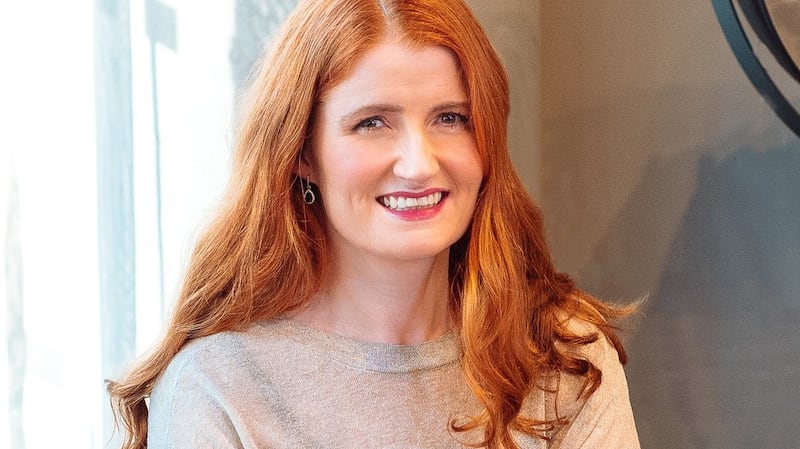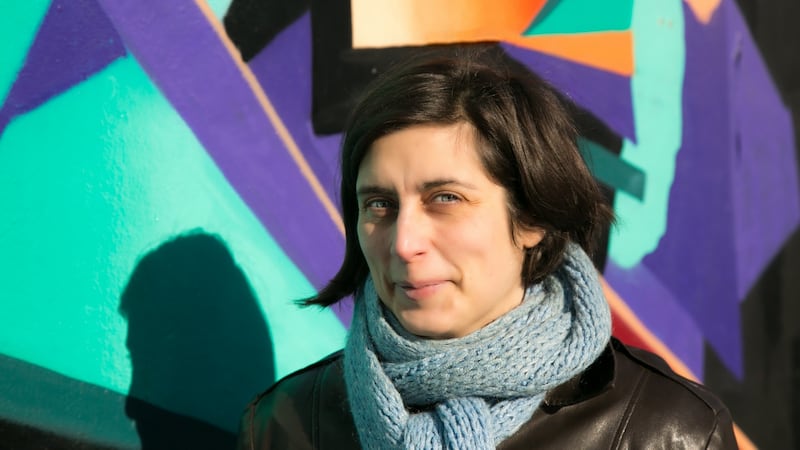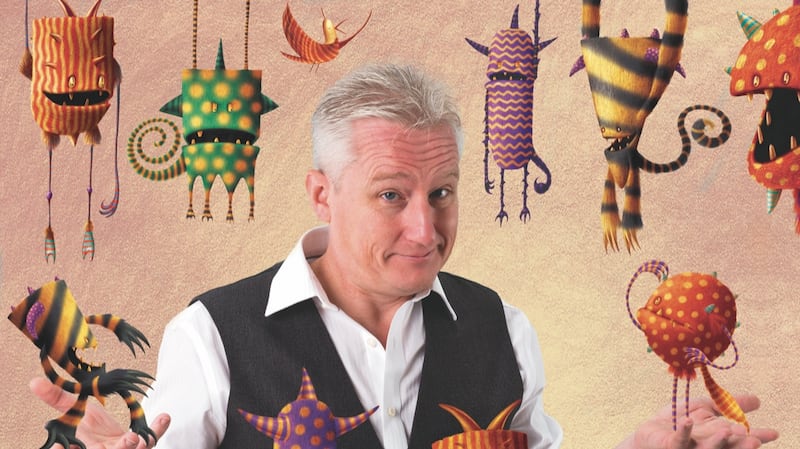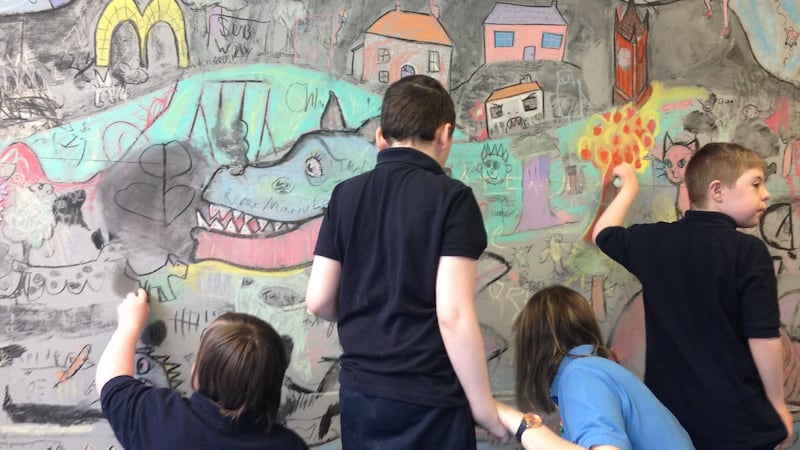Do you struggle to find the time – and frankly, the will – for full-blooded painting sessions with small children at the kitchen table but then feel guilty about not being a “creative” parent?
Don’t despair because creativity comes in many different forms. However, it would be a mistake to underestimate its importance for your children’s happiness and health.

"It doesn't have to be break out the glitter glue," says psychotherapist and author Joanna Fortune. "That is one form of creativity but creativity is all around us."
She likes to think of it as the art of wondering. “I think ‘I wonder’ is an indispensable life skill, for children certainly but for all of us. It leaves us open to another possibility and that, for me, is creativity.”
Fortune will be contributing to a panel discussion, entitled Inspiring Wonder – How to Help Children be Creative and Happy, aimed at parents and teachers on Sunday, November 21st, the final day of the online WonderFest (wonderfest.ie) which runs from November 17th. After 20 months of living through a pandemic, families and schools have never been in more need of effective ways to boost children's wellbeing.
Researchers are producing more and more scientific-based evidence of what readers, writers, musicians, carpenters, chefs and people in numerous other fields of life know from simply doing, that creativity is good for mental health. An Arts Council ESRI report published in 2016 found children taking part in artistic and cultural activities at the age of nine, are, at the age of 13, “happier, have reduced anxiety, better academic skills and fewer socio-emotional difficulties” than peers less engaged with such pursuits.
While small children may seem innately creative and carefree, there’s no doubt the adults in their lives can help and hinder on both fronts. Back in the mid-1960s, research by US psychologist Ellis Paul Torrance concluded that creativity peaked at age 4½, before children started school. That perhaps said more about the education system then than the human capacity for creativity.
There's a reason Harry Chapin wrote his 1978 song about a teacher admonishing a little boy's artistic efforts with the words: "Flowers are red, and green leaves are green/ There's no need to see flowers any other way/ Than the way they always have been seen." Mind you, there are shades of that if you walk into a primary school classroom today and see 29 versions of artwork that vary only in the degree of competence with which a single concept was earnestly copied.
Not so with a "monster doodle" initiative by a previous Laureate na nÓg, illustrator Niamh Sharkey, that Children's Books Ireland (CBI) continues in school programmes. She would start sessions drawing a monster under the direction of children in a classroom before they all got a chance to do it for themselves.
Of course there is no "right" or "wrong" way to draw a monster, which frees children to "do something completely bonkers", says CBI's chief executive Elaina Ryan. They are not going to be held back by comparing it to real life or a version produced by the child beside them.
“You’d be surprised how quickly children will say ‘I can’t. . .’, ‘I can’t draw a house’, ‘I can’t draw a car’, ‘I can’t draw a face’.” At least, not the way they think it should look. “But monsters don’t look like anything – they can be drawn any way.”
When CBI looks at creativity “it is about drawing, creative writing and storytelling – the story of everything”, says Ryan. But that is only a tiny bit of creativity, she acknowledges. “It can be so many different things – CoderDojo would probably give you a very different definition.
“It is a huge and nebulous concept – it is to do with imagination, it is to do with making space for imagination.”
CBI’s interest in the link between creativity and children’s wellbeing was piqued some time ago by emerging research, including a 2018 survey by the UK’s National Literary Trust of 50,000 children between the ages of eight and 18. The mental wellbeing, reading and writing report found children who enjoy reading and writing in their free time and do it daily are three times more likely to have higher levels of mental wellbeing than children who don’t.
“We started looking in to this more and developing a database of the body or research that’s out there. Whatever way you look at it, reading is good for wellbeing, whether it’s the simple thing of escape and enjoyment, or the education side of it where you are developing and learning; it is the calming effect of it as well.”
As a response to the plight of children during the pandemic, the CBI last year produced a “first-aid kit for worry” in the form of a “Mind Yourself” guide containing short reviews of 400 books, ranging from picture books for babies to books for older teenagers that had relevant themes. Finding the right book is “a helpful way of approaching life’s big issues, without it being too much on the nose for somebody who is really in the depths of it,” says Ryan.
The CBI’s latest reading guide, Free to be Me, focuses on inclusion, both in the broadest sense of race and gender, but also in terms of, for example, neuro diversity, refugees, mental health issues.
“We did this off the back of feedback from schools that the books on shelves are really not reflecting the children in classrooms, and that can only affect the perceptions of themselves in a negative way.”

Recognising that the "process" of creativity is as important as the "product" is key for wellbeing. That takes the pressure off, says children's books writer Juliette Saumande, who is a creative associate with Creative Schools – one strand of Creative Ireland, a five-year Government programme with the stated aim to connect people, creativity and wellbeing.
Asked for her definition of “creativity”, Saumande says it’s a question she poses when she visits schools and acknowledges that “it’s complicated”. One way she likes to look at it is based on the creative habits of mind.
“Creativity is a mindset; a combination of curiosity, imagination, collaboration, discipline and persistence.
“The most useful thing about this framework is that it really helps go beyond the idea of a project” – that creativity is only about getting to make something new. The “I’m no good” mentality that afflicts so many of us from an early age can stop us doing something personally fulfilling, simply because, Saumande suggests, the end product does not measure up to an acceptable standard in our head.
“But if you focus on process more than project, then I think you are on to a winner. It’s liberating and means you can enjoy the act of whatever it is.” You will find creativity in maths, in gardening, in circus skills, “it’s kind of pervasive – it’s not about being good or bad at whatever the thing is”.
Creativity looks different at different stages of childhood and adulthood. “With little kids, everybody is creative, it’s not a question,” she asserts. “It just happens, it’s what they do, it’s how they operate.”
In the later years of primary school, “they think creativity is more to do with the arts only. If you get them thinking about it, they might bring in science and Stem [science, technology, engineering, and mathematics] because of experimenting, trial and error and problem-solving.” She is always interested to hear from teenagers how creativity makes them feel – when they are being creative and also when they are touched by somebody else’s creativity, such as listening to a favourite music artist.
In the week before this interview, comments of two teenagers stood out for her: “One said, ‘It makes me feel like I have 100 per cent control of what I do’. To me that sounds like maybe that only happens when that kid’s being creative. Maybe there aren’t that many other places or moments in this teen’s life where he feels 100 per cent in control. The other one said ‘I feel unbound and I feel like I have endless potential’, and that is so cool.”
Saumande’s fellow WonderFest panellist, Fortune, says as children’s play patterns change, from the narrative-rich world of make-believe and dressing up, we adults tend to presume they are not interested in imaginative play anymore. “We stop bidding to connect them in that way.”
But parents should encourage imaginative play, even in middle childhood (eight-12 years) as they move more to scooters, bikes and organised sport. “If imaginative, creative play is made available and appealing at that age, they will still migrate to it as much as the other type of play.”
The psycho-social benefits that creative play fuels are numerous, including critical thinking, solution-focused thinking, flexibility and adaptability. Children who are creative tend not only to be more empathic, because they are able to imagine and wonder from other people’s points of view, but they are never “bored” either, she says. They are always able to come up with something to do – boredom is a route to creativity.
It’s not about parents needing to put down clothes and get out the paints, Fortune adds. It is supposed to be “something that flows through our days and through our lives, and that we are creative in how we connect with each other”.

Communication is a top priority in illustrator Andrew Whitson’s “day job” as a teacher in Glenveagh School for children with severe learning difficulties in Belfast. And he is not just talking about verbal communication “but anywhere we can find it”.
Creativity “is not just pinned down to storytelling and art. It’s opportunities to have independent thought and to explore whatever is engaging them the most. The key to us, in this sector especially, is to get children engaged. Once you can set the stage for that, everything else comes forth”.
In special needs teaching “emotional wellbeing and communication are at the very top of our curriculum tree”, he explains. “We’ve been on that bandwagon before the bandwagon became a bandwagon.”
At Glenveagh, where there is eight to 10 children in a classroom with a range of disabilities, what is creativity doing for the children he’s working with?
“They’re getting a sense of themselves and a sense of security and also happiness,” he says. “Once we can establish those three areas then we can progress.”
He believes creativity between them as a staff also contributes hugely. “We try to create an environment where there is a light-hearted feel, a bit of banter, and the children really pick up on that.”
Whitson regards bolstering their pupils’ capacity for social building as vital. “A lot of these children when they go home at night don’t socialise with peers and we are giving them that opportunity in this setting. We are looking for structures that will allow them to bond and create friendships.”

Glenveagh organises collaborations with children from other mainstream schools and one outstanding success was a visit by children’s books illustrator PJ Lynch, during his time as Laureate na nÓg (2016-18), along with fellow illustrator Paul Howard and the Northern Ireland’s first Children’s Writing Fellow, Irish-language author Máire Zepf. The children were presented with a huge wall painted grey and invited to tackle it with chalks.
It was a “fantastic project, where they all fed off each other”, Whitson recalls. “There was that organic thing that happened without too much input from the adults.” While some obviously did need adult support to participate, there were others who, not liking the close proximity of other children, went to the wall afterwards on their own volition to add to the mural.
“In their own time and own space, they took part,” he says. The end result still stands in the school, which has also established a publishing house to share the fruits of creativity. The first printed work, by and for its pupils, was Inner Peace, which detailed the use of breathing exercises to calm down, with illustrations created by the children out of blocks. It was selected by the International Board on Books for Young People as an outstanding book for young people with disabilities.
That success was followed up by Stress Check, which looks at what happens to the body when in a stressful situation, such as hands getting sweaty or knees going wobbly. The book’s aim was to help children identify signs in their bodies before they get to a point of inappropriate feelings when communication breaks down and nobody can get through to them.
“Those two books have been fantastic for the school and for the children,” says Whitson, in what is a clear example of reaping dividends from both “process” and “product” among children that outsiders might not readily associate with creativity.
Full programme and booking at wonderfest.ie
Expert advice
If you feel you need to make a conscious effort to foster creativity during your children’s day, here’s some advice:
- Start with storytelling: "It allows us to cross that line from what's real into what's fantasy, in a beautiful way," says psychotherapist and author Joanna Fortune.
- Change the plot: when reading a story, encourage your child to devise a different ending, add a new character, change the setting.
- Follow a lead: if your child picks up an item and treats it as anything except its intended purpose, go with that.
- Play with concepts: on the walk to school, for example, say "imagine we were chimpanzees, what would we walk like. . . ?"
- Latch on to a news soundbite: ask a child or teenager, "If you were in charge of the country, what would you do about that?"
- Play around: "don't underestimate the value of creativity and how simple it can be," says Children's Books Ireland CEO Elaina Ryan, who advocates a spirit of playfulness in the home.
- Go abstract: take a leaf out of the CBI playbook and encourage drawings of imaginary things rather than trying to produce something that looks like a standard house or dog. Keep an open mind: about creativity and what creativity is, says illustrator and special needs teacher Andrew Whitson.
- Set the stage: you can provide props and tools but then it's "organic spontaneity between children" that is the "gold standard", he says, particularly in special needs settings.
- Cultivate your own creativity: don't be afraid of looking foolish or making mistakes, says children's writer Juliette Saumande, who is co-presenting a family creativity bootcamp during WonderFest (wonderfest.ie). Creativity is a muscle and you need to work at it, she adds, both by yourself and with your children, and always value it in your lives.












